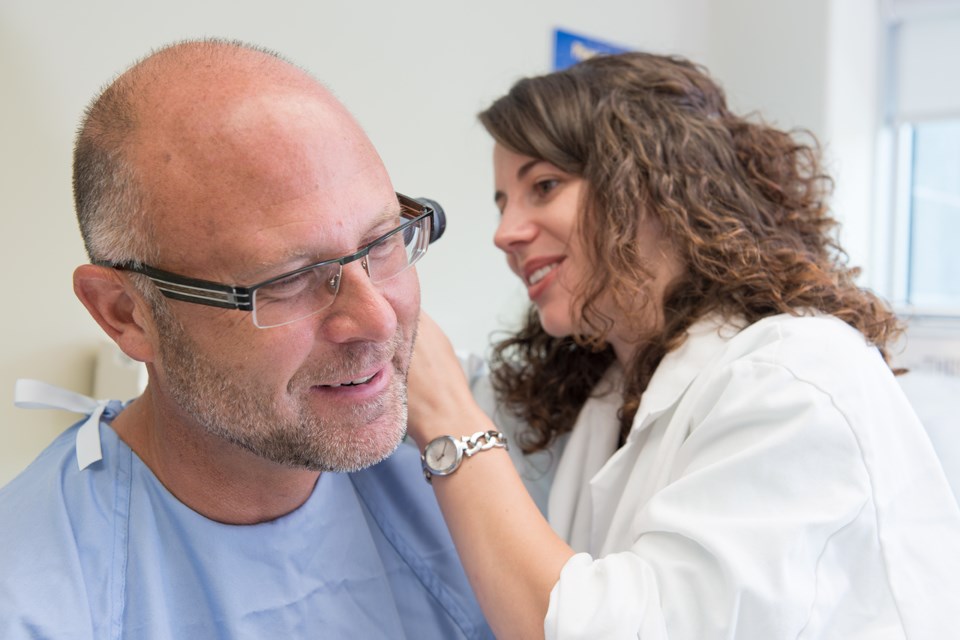THUNDER BAY — After a long career with the Ontario government, Bev MacLeod is happy she found casual work that gives her a crucial role in the training of new doctors in Northern Ontario.
The Thunder Bay woman is one of the members of the public hired by NOSM University to play the role of patients from time to time during the course of the academic year.
On Tuesday evening the medical school will host information sessions in Thunder Bay and Sudbury to provide details of the program to other people like MacLeod, who may be seeking a way to give back to the community.
"I enjoyed my career, and I wanted to continue in something that was meaningful and made a contribution," she said Monday in an interview.
What NOSM U terms "standardized patients" are actually healthy individuals who undergo training to simulate the symptoms of various medical conditions, thereby helping medical students acquire the skills they need to take patient histories and conduct physical exams.
The minimum age to apply to the program is 18, and most of the current cohort of standardized patients ranges in age from 20 to 65.
MacLeod happens to have lots of experience on the stage with Thunder Bay's Cambrian Players, so when she started as standardized patient five years ago, she may have had an easier time adjusting to the role than some others.
But the coordinator of the NOSM U program, Erica Dzuba, said an acting background isn't needed, noting that recruits come from all walks of life, from students to current members of the work force to retired individuals who find it fulfilling to help their community this way.
"It helps them with their communication skills as well, because of the feedback portion of it," Dzuba said. "What's important in being a standardized patient is that they are good communicators, they are comfortable with providing verbal feedback to our medical students, and being comfortable with their health and their body."
Applicants should also have good memorization skills, and must have at least a high school diploma or equivalent.
Standardized patients are paid between $19 and $25 an hour, and must be available weekdays for approximately five hours every four to six weeks, or about six times a year.
Dzuba noted that NOSM U currently has a particular need in Thunder Bay for fully bilingual Francophones to participate as standardized patients, and would also like to see more men apply to the program.
Having helped out at NOSM for five years now, MacLeod is a firm believer in the program's value.
She recalled an incident during one of her role-playing sessions that caught her off guard and left an impression both on her and the student doctor she was interacting with during a training session.
"I was working in tandem with another SP who was playing the role of my son. I was showing signs of Alzheimer's, so we were there to talk to the doctor about where I was cognitively, and what the next steps might be ... I was in the moment, and the medical student asked if I had any concerns or worries. I turned to the young fellow who was playing my son and said 'I don't want to forget you,' and I broke out into tears. It was so poignant."
MacLeod said the student doctor was caught completely by surprise, but "bless his heart, he asked if he could help me, and pushed a tissue box across to me so I could dry my eyes."
At the end of the training session, she said, she apologized because "that got a little away from me," but the person overseeing the session replied " 'No, that was perfect,' " before turning to the student to say " 'This is going to happen. How do you handle it when your patient breaks down and loses it?' He took it as a teaching moment, and that really made me feel I am making a contribution here."
The information session about the standardized patient program is scheduled for Tuesday from 6 p.m. to 7 p.m. in Room 1011 of the NOSM University building in Thunder Bay, and Room 107 of the NOSM University building in Sudbury.
Registration is not required.
